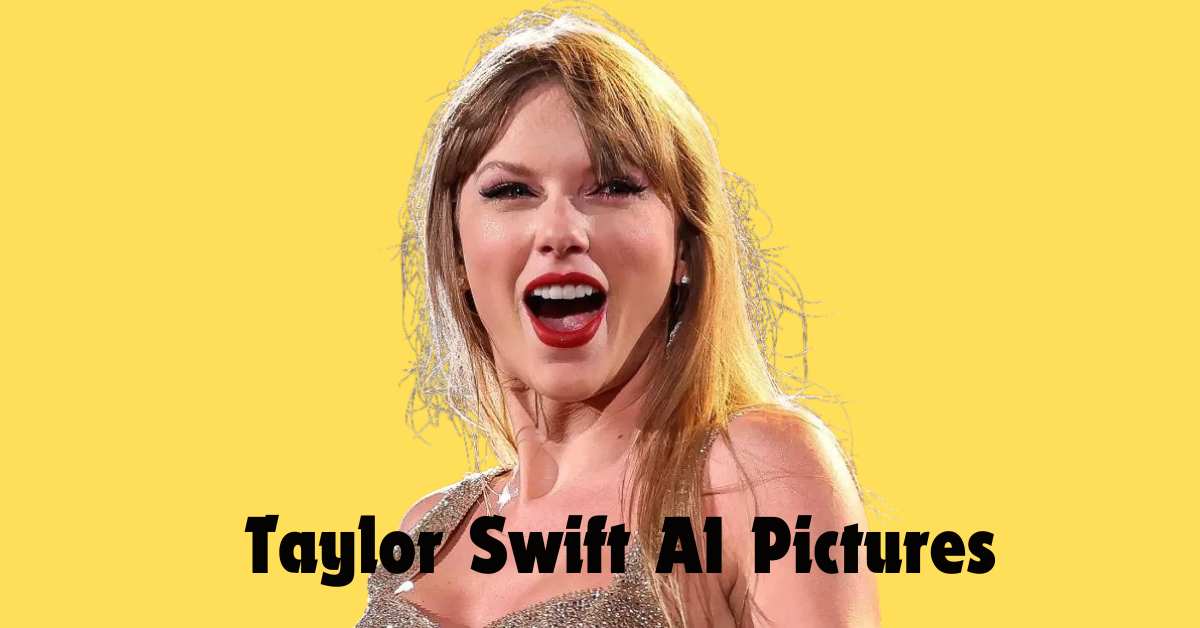Artificial intelligence (AI) has made significant strides in recent years, transforming numerous fields, from healthcare to entertainment. However, its advancements have also led to the proliferation of AI-generated content that can be misleading or harmful just like . One of the troubling developments in this area is the creation and spread of fake images, including those featuring celebrities like Taylor Swift. This article explores how to identify Taylor Swift AI Pictures and offers guidance on staying safe amid the rise of such content.
Understanding AI-Generated Pictures
What Are AI-Generated Pictures?
Artificial intelligence algorithms create AI-generated pictures, often using deep learning techniques like Generative Adversarial Networks (GANs). These algorithms train on large datasets to produce images that are highly realistic and difficult to distinguish from real photographs.
How AI Creates Fake Images
AI tools, especially GANs, work by learning from existing images and generating new ones that resemble the input data. This process involves two neural networks: a generator, which creates images, and a discriminator, which evaluates them. The generator tries to create convincing images, while the discriminator tries to detect whether the image is real or fake. Over time, this iterative process results in highly convincing AI-generated images.
The Case of Taylor Swift AI Pictures
Recent Controversies
Recently, AI-generated images of Taylor Swift attracted significant attention, especially when people used these images to create misleading or explicit content. The images circulated on social media platforms like X (formerly Twitter), garnering millions of views and extensive interaction before moderators removed them. This incident highlights the growing issue of AI-generated fake content and its potential to cause harm.
The Impact on Public Perception by Taylor Swift AI Pictures
The spread of fake AI-generated images can distort public perception and damage reputations. When such images feature high-profile individuals like Taylor Swift, they can contribute to misinformation and privacy violations. The viral nature of these images, coupled with their ability to deceive, underscores the need for increased awareness and tools to detect and manage such content.
Identifying Taylor Swift AI Pictures Pictures
Visual Cues of AI-Generated Images
Inconsistencies in Details
AI-generated images may exhibit subtle inconsistencies that can reveal their artificial nature. These include unnatural facial expressions, distorted features, or odd lighting. For example, the eyes in an AI-generated image might not align perfectly, or the background might appear strangely blurred or mismatched.
Overly Smooth or Blurry Features
AI tools can sometimes produce images with unnaturally smooth or blurry features. This can include overly polished skin, blurred edges, or unrealistic textures. These artifacts are often signs that the image was generated by an AI rather than captured by a camera.
Using Detection Tools
AI Detection Software
Several tools and software are available to help detect Taylor Swift AI Pictures. These tools use algorithms to analyze image characteristics and determine whether AI likely generated them. Examples include Deepware Scanner and Sensity AI, which identify deepfakes and other manipulated media.
Reverse Image Search
Conducting a reverse image search can also help identify whether an image is fake. Tools like Google Images or TinEye allow users to upload an image and find its origins or similar images online. This can help verify if the image has been previously flagged or debunked.
Dealing with Taylor Swift AI Pictures
Reporting and Removal
If you encounter AI-generated images that you believe are misleading or harmful, reporting them to the platform where they are hosted is crucial. Most social media platforms have policies against explicit or fake content and provide mechanisms for users to report violations. Prompt reporting helps in the swift removal of harmful content and protects others from being misled.
Educating Yourself and Others
Raising awareness about the existence and characteristics of AI-generated images can help individuals become more discerning consumers of online content. Educating others about the signs of fake images and the tools available for detection can reduce the impact of misleading content and promote a more informed online community.
Legal and Ethical Considerations
The creation and distribution of fake images, especially those with explicit content, often raise legal and ethical concerns. It’s important to understand the legal implications of sharing or creating such content and to respect the privacy and rights of individuals depicted in images. Engaging with content responsibly and adhering to ethical standards helps mitigate the risks associated with AI-generated fake content.
Staying Safe in the Age of AI
Protecting Your Digital Identity
Maintaining a strong digital identity involves being cautious about the information you share online and verifying the authenticity of content you encounter. Be skeptical of images that seem out of place or are shared under dubious circumstances. Regularly updating your privacy settings and using secure platforms can also help protect your personal information.
Using Privacy Tools
Utilizing privacy tools and services can add an extra layer of protection against unauthorized use of your images or personal data. Tools like VPNs, secure messaging apps, and privacy-focused browsers help safeguard your online activities and reduce the risk of exposure to harmful content.
Engaging with Responsible Platforms
Support and engage with platforms that prioritize user safety and actively work to prevent the spread of fake or harmful content. Advocating for responsible content moderation and ethical AI practices contributes to a safer online environment for everyone.
Conclusion
The rise of AI-generated images, including those featuring celebrities like Taylor Swift, presents new challenges in digital content. Understanding how to identify fake images, and dealing with misinformation responsibly. And staying informed about the latest tools and practices is essential in navigating this evolving landscape.
By being vigilant and utilizing available resources, individuals can protect themselves and others from the adverse effects of AI-generated fake content. As AI technology continues to advance, fostering a more informed and cautious approach to digital media will be key to maintaining trust and safety in the online world.









